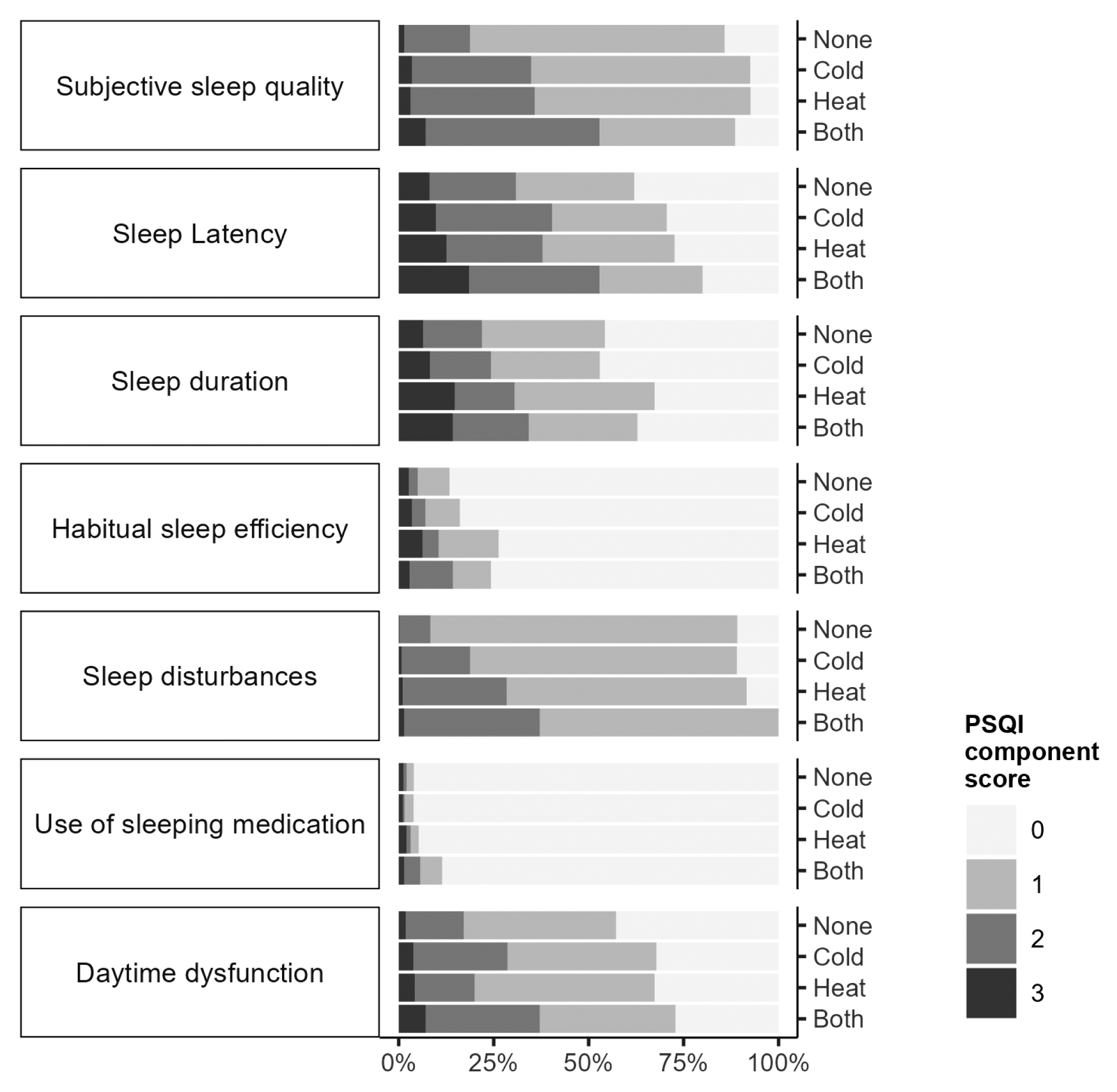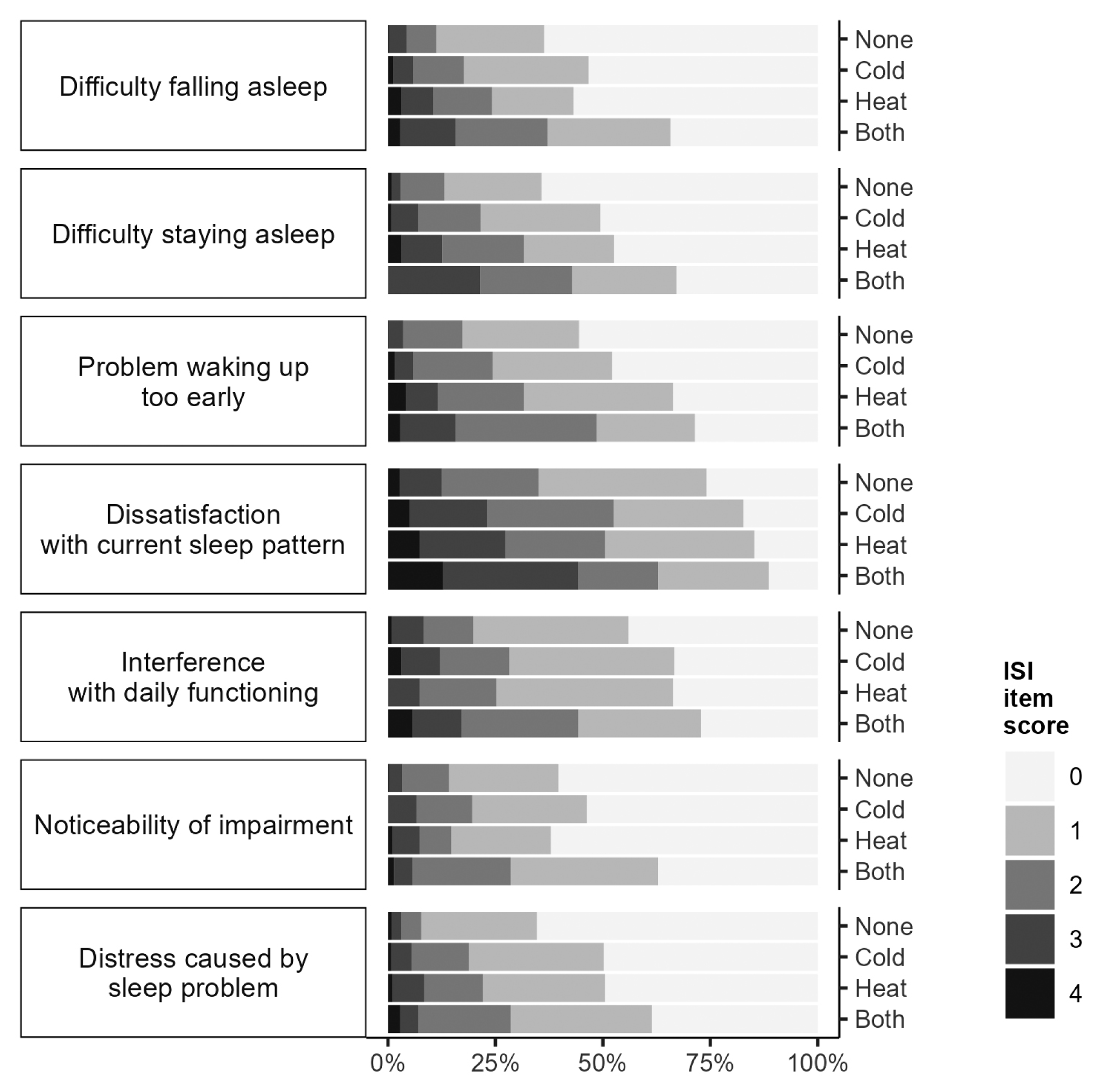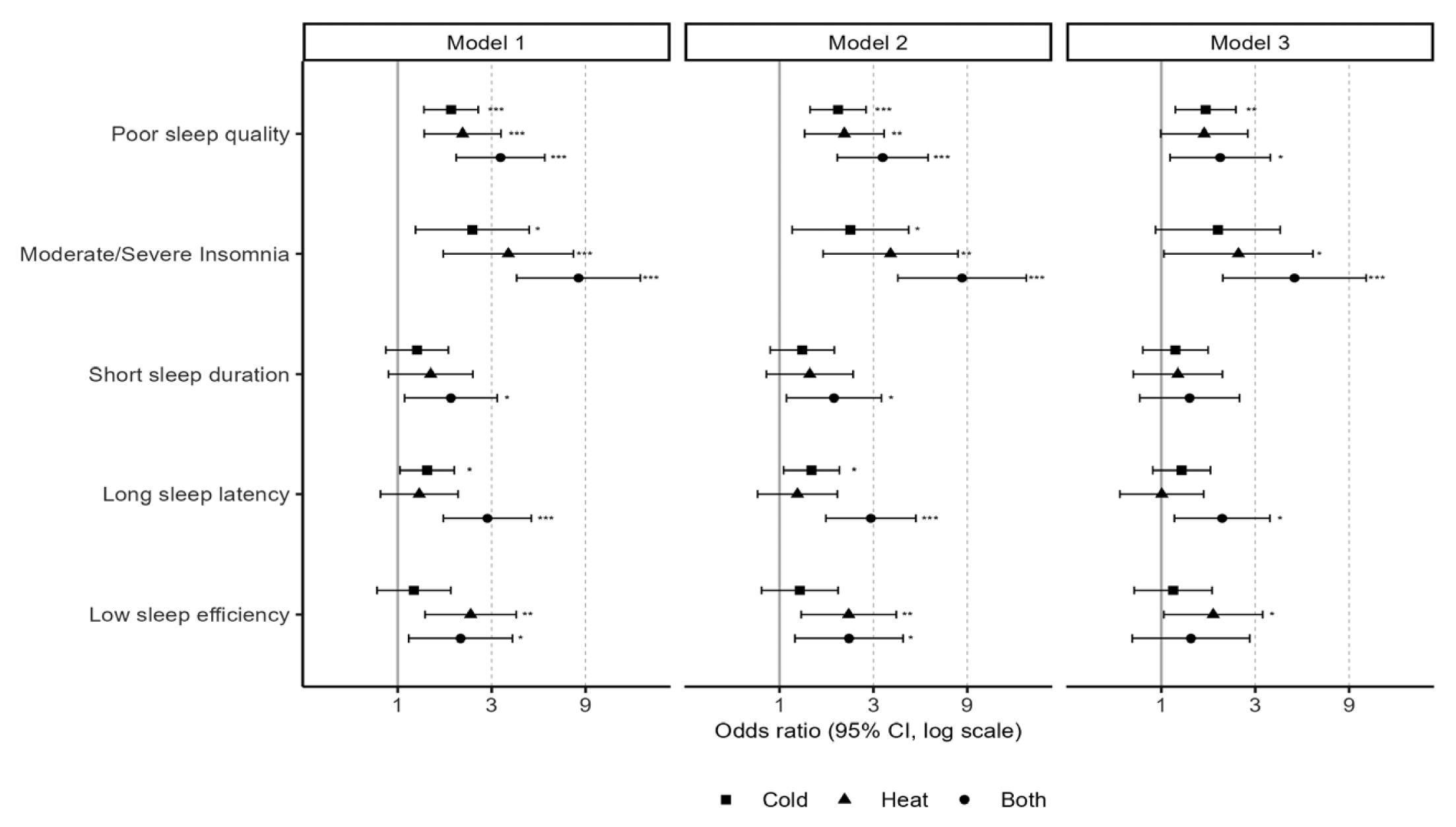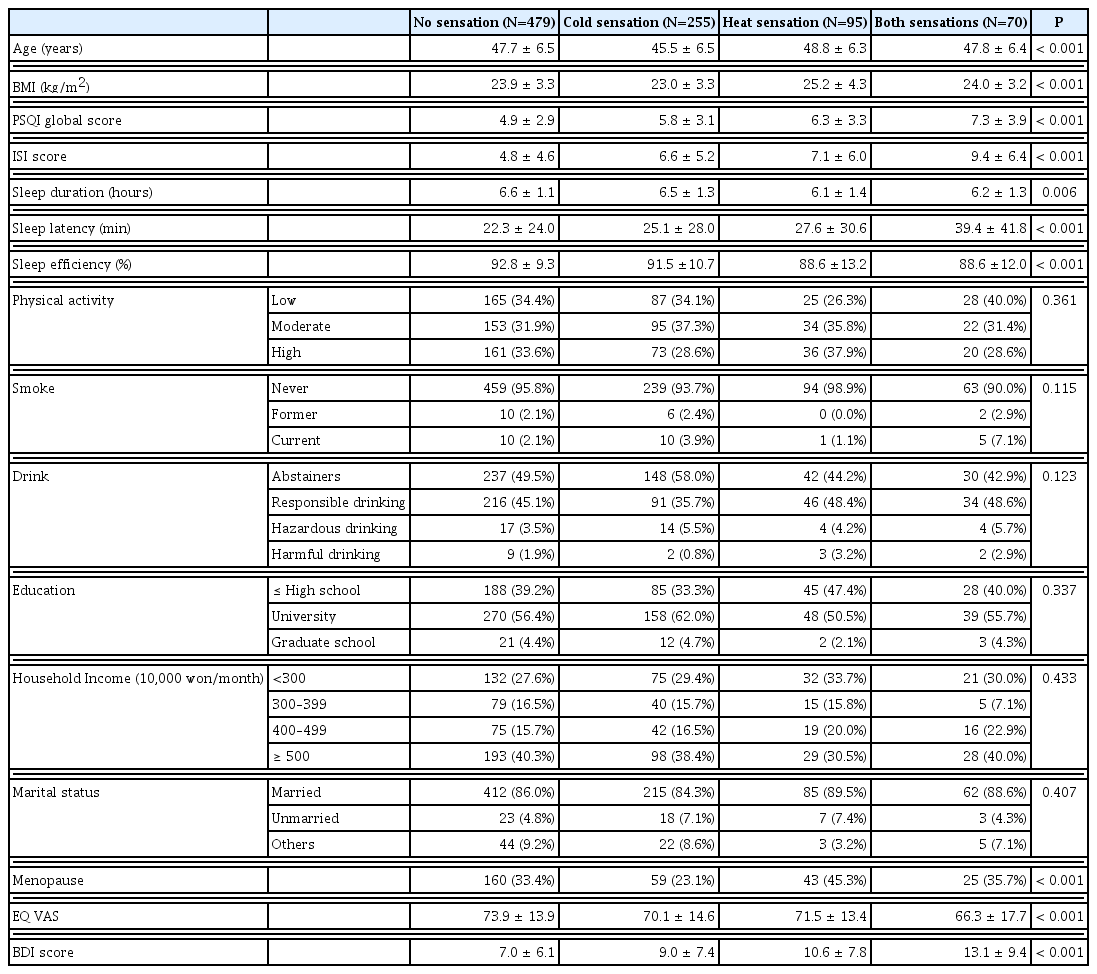References
1. Watson N. F., Badr M. S., Belenky G., Bliwise D. L., Buxton O. M., Buysse D., et al. 2015;Joint Consensus Statement of the American Academy of Sleep Medicine and Sleep Research Society on the Recommended Amount of Sleep for a Healthy Adult: Methodology and Discussion. Journal of Clinical Sleep Medicine 11(08):931–952.
https://doi.org/doi:10.5664/jcsm.4950.
2. Lallukka T., Sivertsen B., Kronholm E., Bin Y. S., Overland S., Glozier N.. 2018;Association of sleep duration and sleep quality with the physical, social, and emotional functioning among Australian adults. Sleep Health 4(2):194–200.
https://doi.org/10.1016/j.sleh.2017.11.006.
3. Chung S., Cho S. W., Jo M. W., Youn S., Lee J., Sim C. S.. 2020;The Prevalence and Incidence of Insomnia in Korea during 2005 to 2013. Psychiatry Investig 17(6):533–540.
https://doi.org/10.30773/pi.2019.0218.
4. Simonsick E. M., Meier H. C. S., Shaffer N. C., Studenski S. A., Ferrucci L.. 2016;Basal body temperature as a biomarker of healthy aging. Age (Dordr) 38(5–6):445–454.
https://doi.org/10.1007/s11357-016-9952-8.
7. Krauchi K., Cajochen C., Werth E., Wirz-Justice A.. 1999;Warm feet promote the rapid onset of sleep. Nature 401(6748):36–37.
https://doi.org/10.1038/43366.
8. Krauchi K., Konieczka K., Roescheisen-Weich C., Gompper B., Hauenstein D., Schoetzau A., et al. 2014;Diurnal and menstrual cycles in body temperature are regulated differently: a 28-day ambulatory study in healthy women with thermal discomfort of cold extremities and controls. Chronobiol Int 31(1):102–113.
https://doi.org/10.3109/07420528.2013.829482.
9. Pache M., Krauchi K., Cajochen C., Wirz-Justice A., Dubler B., Flammer J., Kaiser H. J.. 2001;Cold feet and prolonged sleep-onset latency in vasospastic syndrome. Lancet 358(9276):125–126.
https://doi.org/10.1016/S0140-6736(01)05344-2.
10. Krauchi K., Gasio P. F., Vollenweider S., Von Arb M., Dubler B., Orgul S., et al. 2008;Cold extremities and difficulties initiating sleep: evidence of co-morbidity from a random sample of a Swiss urban population. J Sleep Res 17(4):420–426.
https://doi.org/10.1111/j.1365-2869.2008.00678.x.
11. van den Heuvel C., Ferguson S., Dawson D.. 2006;Attenuated thermoregulatory response to mild thermal challenge in subjects with sleep-onset insomnia. Sleep 29(9):1174–1180.
https://doi.org/10.1093/sleep/29.9.1174.
12. Van Someren E. J., Dekker K., Te Lindert B. H., Benjamins J. S., Moens S., Migliorati F., et al. 2016;The experienced temperature sensitivity and regulation survey. Temperature (Austin) 3(1):59–76.
https://doi.org/10.1080/23328940.2015.1130519.
13. Bae K. H., Yoon Y., Yeo M., Kim H. S., Lee Y., Lee S.. 2016;Development on the Questionnaire of Cold-Heat Pattern Identification Based on Usual Symptoms for Health Promotion. Journal of Physiology and Pathology in Korean Medicine 30(2):116–123.
14. Lee B.-J., Jung H.-J., Choi J.-Y., Kang W.-C., Jung S.-K.. 2012;Preliminary Study to Develop a Korean Oriental Medical Assessment Tool for Syndrome Differentiation of Chronic Obstructive Pulmonary Disease. Journal of Korean Medicine 33(3):82–94.
15. Baek Y., Seo B. N., Jeong K., Yoo H., Lee S.. 2020;Lifestyle, genomic types and non-communicable diseases in Korea: a protocol for the Korean Medicine Daejeon Citizen Cohort study (KDCC). BMJ Open 10(4):e034499.
https://doi.org/10.1136/bmjopen-2019-034499.
16. Zeng L. N., Zong Q. Q., Yang Y., Zhang L., Xiang Y. F., Ng C. H., et al. 2020;Gender Difference in the Prevalence of Insomnia: A Meta-Analysis of Observational Studies. Front Psychiatry 11:577429.
https://doi.org/10.3389/fpsyt.2020.577429.
17. Jang J.-B., Lee K.-S., Song B.-K.. 1995;Epidemiologic Study of Female’s Part-Cold Hypersensitivity Syndrome. Journal of Korean Medicine 16(1):21–35.
19. Sohn S. I., Kim D. H., Lee M. Y., Cho Y. W.. 2012;The reliability and validity of the Korean version of the Pittsburgh Sleep Quality Index. Sleep Breath 16(3):803–812.
https://doi.org/10.1007/s11325-011-0579-9.
20. Buysse D. J., Reynolds C. F., Monk T. H., Berman S. R., Kupfer D. J.. 1989;The Pittsburgh Sleep Quality Index: a new instrument for psychiatric practice and research. Psychiatry Res 28(2):193–213.
https://doi.org/10.1016/0165-1781(89)90047-4.
21. Cho Y. W., Song M. L., Morin C. M.. 2014;Validation of a Korean Version of the Insomnia Severity Index. J Clin Neurol 10(3):210–215.
22. Morin C. M., Belleville G., Belanger L., Ivers H.. 2011;The Insomnia Severity Index: psychometric indicators to detect insomnia cases and evaluate treatment response. Sleep 34(5):601–608.
https://doi.org/10.1093/sleep/34.5.601.
24. Ezzati M., Lopez A. D., Rodgers A. A., Murray C. J. L.. 2004. Comparative quantification of health risks : global and regional burden of disease attributable to selected major risk factors In : Ezzati Majid, et al, ed. World Health Organization. Geneva:
27. Park K., Jaekal E., Yoon S., Lee S. H., Choi K. H.. 2019;Diagnostic Utility and Psychometric Properties of the Beck Depression Inventory-II Among Korean Adults. Front Psychol 10:2934.
https://doi.org/10.3389/fpsyg.2019.02934.
28. Gompper B., Bromundt V., Orgul S., Flammer J., Krauchi K.. 2010;Phase relationship between skin temperature and sleep-wake rhythms in women with vascular dysregulation and controls under real-life conditions. Chronobiol Int 27(9–10):1778–1796.
https://doi.org/10.3109/07420528.2010.520786.
29. Riemann D., Spiegelhalder K., Feige B., Voderholzer U., Berger M., Perlis M., Nissen C.. 2010;The hyperarousal model of insomnia: a review of the concept and its evidence. Sleep Med Rev 14(1):19–31.
https://doi.org/10.1016/j.smrv.2009.04.002.
31. Lee H.-S., Kim H., Lee S., Jeon J.-H., Kim B.-K., et al. 2016;Preliminary Study to Develop the Instrument on Pattern Identifications for Insomnia. Journal of Oriental Neuropsychiatry 27(4):223–234.
https://doi.org/10.7231/jon.2016.27.4.223.
32. Na I. D., Park M. S., Kim Y. M.. 2017;The Study on Korean Medical Pattern Differentiation of Sleep-Wake Disorders by DSM-V Classification. Journal of Physiology & Pathology in Korean Medicine 31(2):83–93.
https://doi.org/10.15188/kjopp.2017.04.31.2.83.




